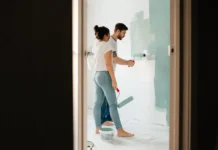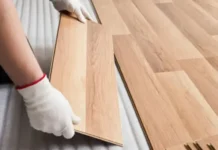When it comes time to replace your windows or add new ones you realise the complexity of window styles and materials. Windows need to work in harmony with the exterior and interior design of your home.
Choose windows that complement your home’s aesthetic. You don’t want a wall of glass and sleek aluminium in a historic cottage when a more traditional timber-frame style would fit better.
Types of Windows
Sliding windows are ideal for bedrooms and bathrooms as they can be propped open just enough to let in fresh air around the clock. The clean lines are good for minimalist or modern homes and they don’t protrude or intrude into the room.
They accommodate fly screens for keeping out mozzies and other pests.
Double-hung windows are a great choice for almost all rooms. They can be duplicated side-by-side for large rooms or with a fixed pane in between. They can be made tall and narrow for smaller spaces.
Both top and bottom pane slide to allow you to control airflow.
Casement windows are hinged like a door. You can choose two together or if space is an issue, you can choose a narrow single pane. If you are trying to let in the breeze, make sure you understand which way the wind blows, and don’t block the flow by putting your hinges on the wrong side.
Picture windows are stationary and do not open. This makes them more energy efficient and allows for larger sizes. Use these when you want to maximize the view. These are most often seen in living rooms and other large living spaces to maximize exposure to dramatic vistas.
Louvres have the sleek look of fixed panel or casement windows from a distance but have the advantage of maximum airflow. They can easily be fitted with fly screens. These windows are very common in tropical environments to take advantage of constant sea breezes.
Window Frames
In addition to types of windows, you are presented with different frame materials. Each of these materials has its advocates and their pros and cons.
Aluminium is cost-friendly and low maintenance. It is a poor insulator that is prone to condensation and corrosion
Vinyl is energy efficient and low maintenance. One drawback is that it is not natural looking and may warp or discolour.
Wood has a timeless appearance and great insulation. The downside is high maintenance, high cost and they are prone to pests and rot.
Fibreglass is long-lasting and ideal for fluctuating weather conditions. They are higher priced and have limited customization options.
Safety Standards
All windows and doors are required to meet BCA specifications for structural integrity, water penetration and energy efficiency. In certain areas, your new windows might have to meet high wind or fire standards. If you choose the wrong frame and glass they won’t be signed off and need to be replaced.
With so many types and materials to choose from, it’s smart to understand their benefits and disadvantages. Make sure you shop around, and do your research so the windows you decide on will contribute to your home’s aesthetic, comfort and safety.



































































